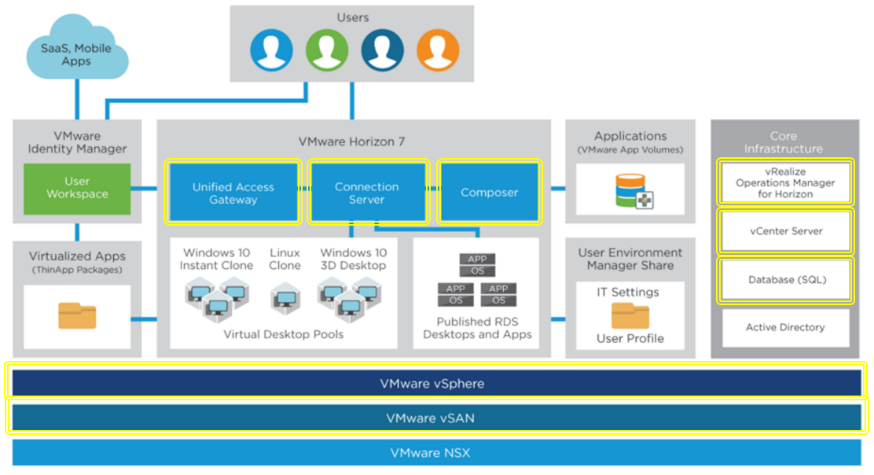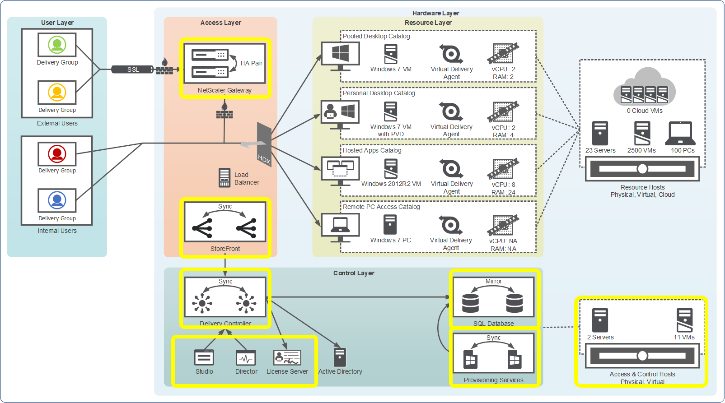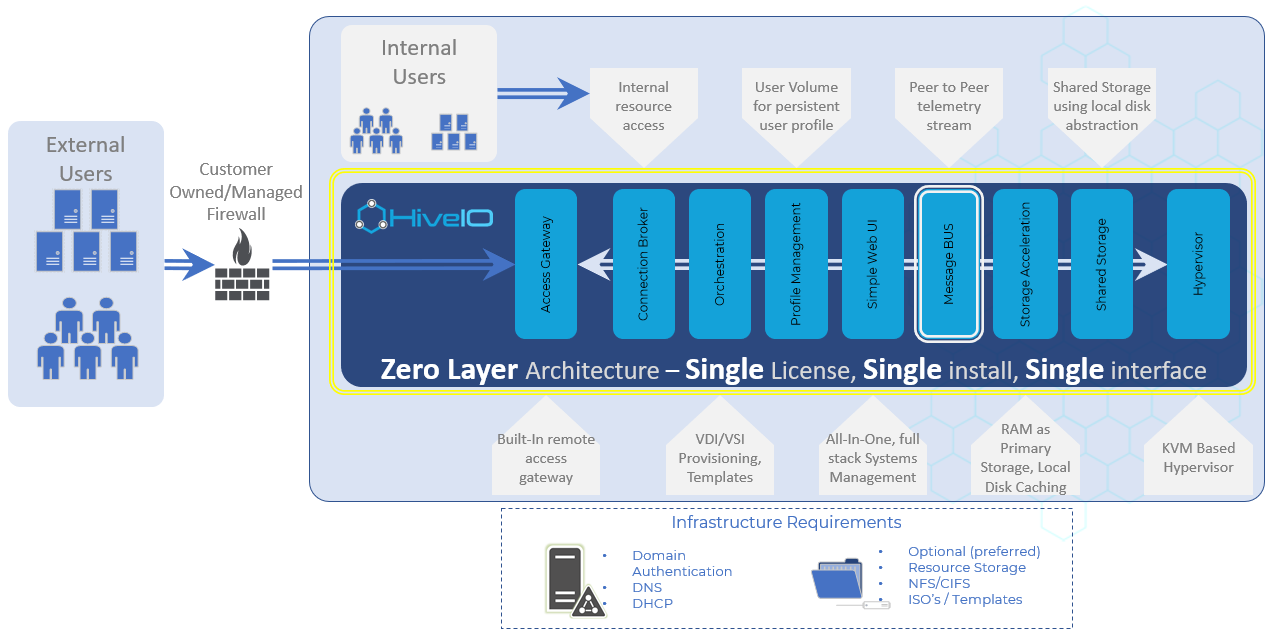Rethinking VDI With Hive Fabric

Greg Dietrich, Global SE Lead
Over the last year, I have visited many of our global customers. These have included customers in education, healthcare, financial services, federal, as well as Managed Service Providers (MSP’s) and Value-Added Resellers (VAR’s).
Our conversations often focus on their IT systems and services and how they are struggling to meet their business goals and how technology often works against them not for them. What I find particularly interesting is that the overarching goals conveyed by individuals from systems administrators to directors and even executive management are aligned. They all want more simplicity when it comes to their IT architecture, costs, and operations. Technology teams want the ability to delivery technology and solutions to end users quickly and simply. These teams want to focus on innovating for their business, not managing and supporting infrastructure.
There is one area of common IT infrastructure that is still seen as highly complex and expensive – Virtual Desktop Infrastructure (VDI). This is fraught with frequent changes in architecture and software versions and has traditionally required multiple vendors and layers to operate. Yet, if done effectively, VDI can bring significant value to organizations – centralizing desktop management, reducing administrative overhead, and improving an organization’s security.
Regardless of whether the platform is based on Hyperconverged Infrastructure or 3-tiered architecture of compute, networking, and storage, the current VDI story is often plagued with layer upon layer of different solutions with proliferating management layers and associated management hardware.
Below are some well-known Reference Architecture diagrams from some of the legacy vendors in VDI, highlighting the additional management system(s) or application(s) required to manage the “simple” orchestration of VDI (outlined in yellow).
Figure 1: VMware Workspace One and VMware Horizon 7 Enterprise Edition On-Premises Reference Architecture

Figure 2: Xendesktop Deployment Blueprint Reference Architecture

With the overwhelming demand for a different approach, vendors are scrambling to attempt to consolidate parts of their solution into the cloud to give the impression that this is a less complex architecture. This has merely moved the operations into the vendor layer, with additional costs and a risk of outsourcing your key infrastructure to an unknown team.
Hive Fabric provides virtual desktops, virtual servers, and virtual storage, with all the benefits of an Intelligent Virtualization solution from a single vendor in a single install. The Hive Fabric Message Bus provides the foundation for an intelligent datacenter and efficiently binds the successful integration of the hypervisor, VM orchestration, provisioning, brokering, cluster load balancing, user profile management, storage acceleration and hyperconvergence, as well as access gateway. Hive Fabric allows customers to deliver virtualization without multiple deployments of management applications, VM’s, servers, or appliances. The Message Bus provides Hive Fabric with the peer-to-peer relationship that allows complete system management from any host within the cluster.
At HiveIO, we have the advantage of having developed Hive Fabric as a virtualization solution from the ground up without the need to bolt on other applications or code as legacy providers have had to do over nearly a decade. The result is a simplified approach to operations and deployment of virtual desktops, virtual servers, and virtual storage. Hive Fabric orchestrates multiple open source components to make it all possible. Below is a reference architecture outlining how Hive Fabric interacts with the Message Bus, as well as identifying the single management interface (outlined in yellow).
Figure 3: Hive Fabric Reference Architecture

With architectures, software versions, and technology rapidly evolving, businesses are demanding single vendor solutions to address these requirements rather than building their own solution leveraging multiple products from different vendors.
Hive Fabric is empowering the IT Generalist with its all-inclusive platform for managing operations across all datacenter virtualization needs, including VDI, VSI, and storage.
Hive Fabric is uniquely poised to challenge the status-quo that has existed so long within the virtualization industry, providing an alternative to previously complex and expensive virtual desktop and virtual server architectures.
